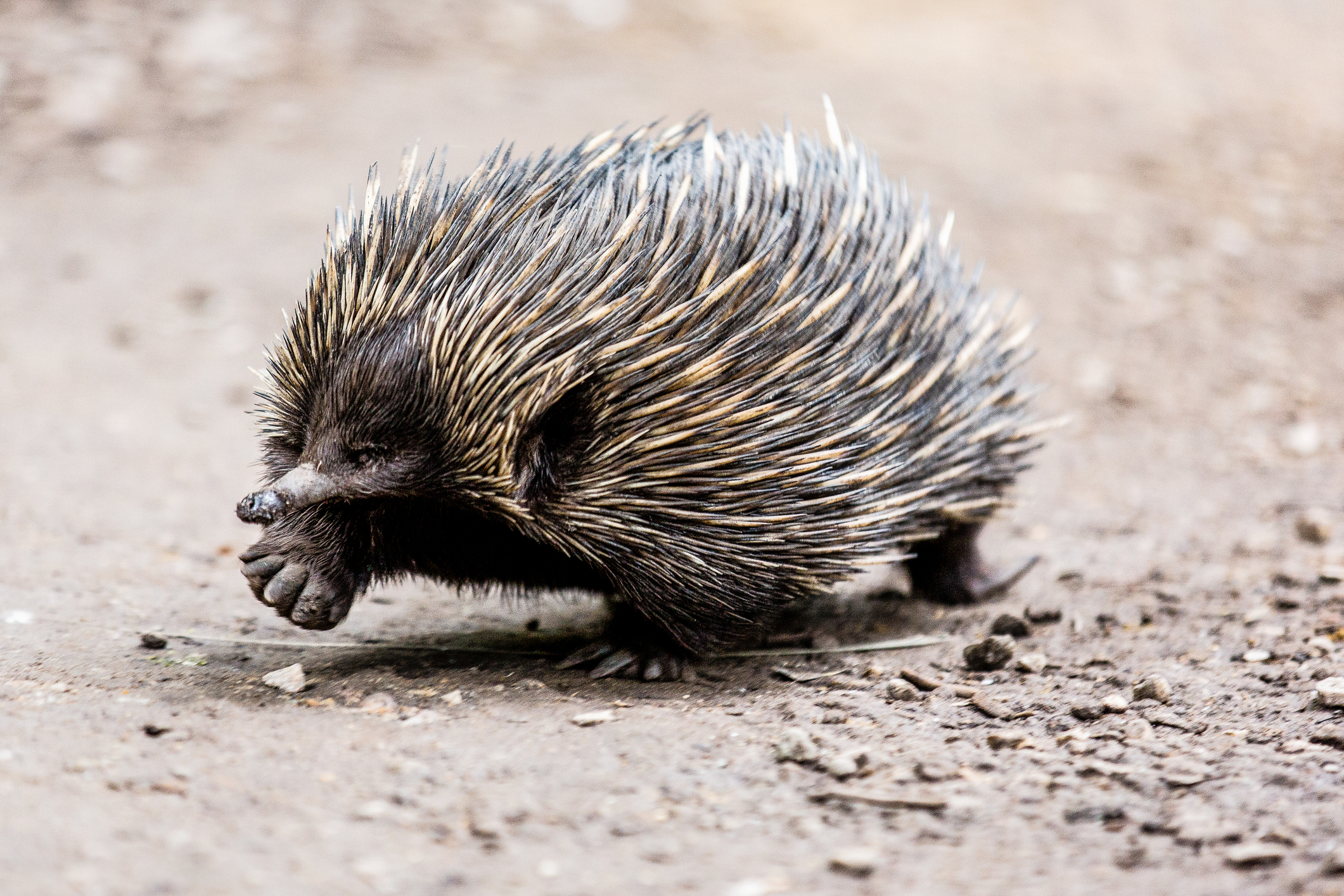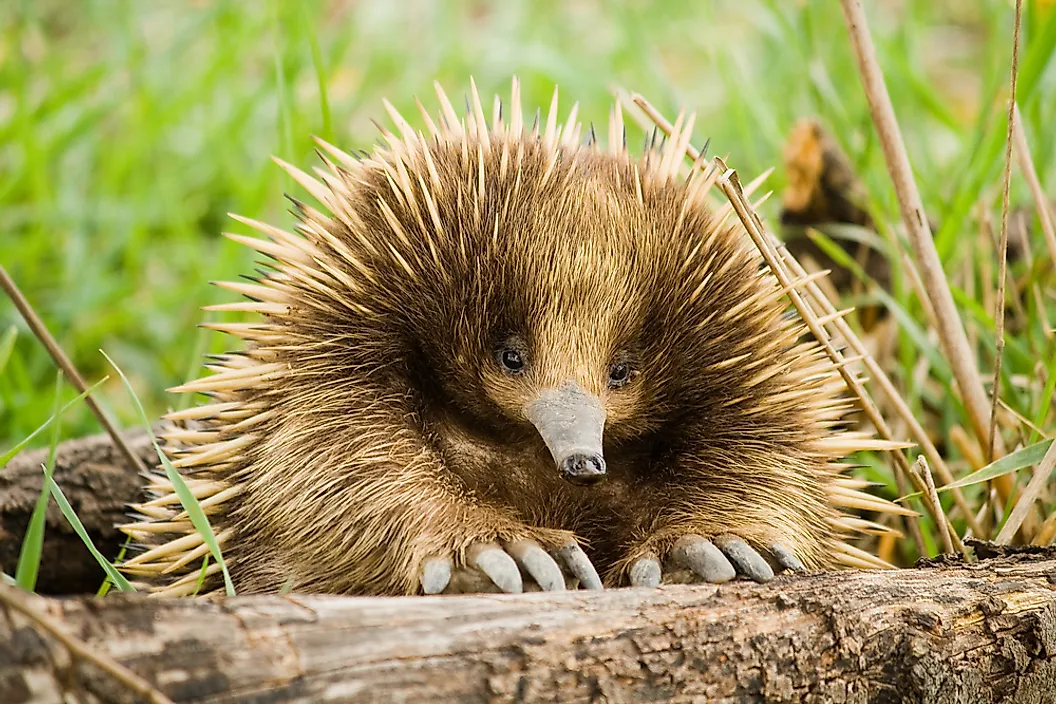
Outliers among mammals, monotremes lay eggs instead of giving birth to live young. Only two types of monotremes, the platypus and echidna, still exist, but more monotreme species were around about 100 million years ago. Some of them might possibly be even weirder than their descendants.
Monotreme fossils found in refuse from the opal mines of Lightning Ridge, Australia, have now revealed the opalized jawbones of three previously unknown species that lived during the Cenomanian age of the early Cretaceous. Unlike modern monotremes, these species had teeth. They also include a creature that appears to have been a mashup of a platypus and echidna—an “echidnapus.”
Fossil fragments of three known species from the same era were also found, meaning that at least six monotreme species coexisted in what is now Lightning Ridge. According to the researchers who unearthed these new species, the creatures may have once been as common in Australia as marsupials are today.
“[This is] the most diverse monotreme assemblage on record,” they said in a study recently published in Alcheringa: An Australasian Journal of Paleontology.
The Echidnapus emerges
Named Opalios spendens, the “echidnapus” shows similarities to both ornithorhynchoids (the platypus and similar species) and tachyglossids (echidna and similar species). It is thought to have evolved before the common ancestor of either extant monotreme.
The O. splendens holotype had been fossilized in opal like the other Lightning Ridge specimens, but unlike some, it is preserved so well that the internal structure of its bones is visible. Every mammalian fossil from Lightning Ridge has been identified as a monotreme based partly on their peculiarly large dental canals. While the fossil evidence suggests the jaw and snout of O. splendens are narrow and curved, similar to those of an echidna, it simultaneously displays platypus features.
So what relates the echidnapus to a platypus? Despite its jaw being echidna-like at first glance, its dentary, or the part of the jaw that bears the teeth, is similar in size to that of the platypus ancestor Ornithorhynchus anatinus. Other features related more closely to the platypus than the echidna have to do with its ramus, or the part of the jaw that attaches to the skull. It has a short ascending ramus (the rear end) and twisted horizontal ramus (the front end) that are seen in other ornithorhynchoids.
Another platypus-like feature of O. splendens is the flatness of the front of its lower jaw, which is consistent with the flatness of the platypus snout. The size of its jaw also suggests a body size closer to that of a platypus. Though the echidnapus had characteristics of both surviving monotremes, neither of those have the teeth found on this fossil.
My, what teeth you don’t have
Cretaceous monotremes might not have had as many teeth as the echidnapus, but they all had some teeth. The other two new monotreme species that lived among the Lightning Ridge fauna were Dharragarra aurora and Parvopalus clytiei, and the jaw structure of each of these species is either closer to the platypus or the echidna. D. aurora has the slightly twisted jaw and enlarged canal in its mandible that are characteristic of an ornithorhynchoid. It might even be on the branch that gave rise the platypus.
P. clytiei is the second smallest known monotreme (after another extinct species named Teinolophos trusleri). It was more of an echidna type, with a snout that was curved and deep like that of a tachyglossid rather than flat like that of an ornithorhynchoid. It also had teeth, though fewer than the echidnapus. Why did those teeth end up disappearing altogether in modern monotremes?
Monotremes without teeth came onto the scene when the platypus (Ornithorhynchus anatinus) appeared during the Pleistocene, which began 2.6 million years ago. The researchers think competition for food caused the disappearance of teeth in the platypus—the spread of the Australo-New Guinean water rat may have affected which prey platypuses hunted for. Water rats eat mostly fish and shellfish along with some insects, which are also thought to have been part of the diet of ancient ornithorhynchoids. Turning to softer food to avoid competition may explain why the platypus evolved to be toothless.
As for echidnas, tachyglossids are thought to have lost their teeth after they diverged from ornithorhynchoids near the end of the Cretaceous. Echidnas are insectivores, grinding the hard shells of beetles and ants with spines inside their mouths, so have no need for teeth.
Although there is some idea of what happened to their teeth, the fate of the diverse species of Cretaceous monotremes, which were not only toothy but mostly larger than the modern platypus and echidna, remains unknown. The end of the Cretaceous brought a mass extinction triggered by the Chicxulub asteroid. Clearly, some monotremes survived it, but no monotreme fossils from the time have surfaced yet.
“It is unclear whether diverse monotreme fauna survived the end-Cretaceous mass extinction event, and subsequently persisted,” the researchers said in the same study. “Filling this mysterious interval of monotreme diversity and adaptive development should be a primary focus for research in the future.”
Alcheringa: An Australasian Journal of Palaeontology, 2024. DOI: 10.1080/03115518.2024.2348753



3175x175(CURRENT).thumb.jpg.b05acc060982b36f5891ba728e6d953c.jpg)
Recommended Comments
There are no comments to display.
Join the conversation
You can post now and register later. If you have an account, sign in now to post with your account.
Note: Your post will require moderator approval before it will be visible.